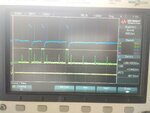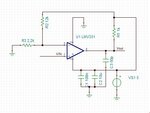knikhil271083
Member level 2
Dear Experts,
I want to design a circuit that senses change in current flowing through a variable load. The current is DC and the load draws anywhere between 90mA to 300mA nominal. During a fault condition, the load the load current dips (reduces) briefly for around 200us by 20mA and then goes back to 300mA. This means that, for let's say 300mA load current, the current goes to 280mA for around 200us and returns back to 300mA. The common voltage is 48VDC.
I am planning to use a current sense amplifier like TI's INA301 or similar to sense the current but I don't want to use an ADC to detect the current dip. I want to use a comparator so that I can just get a '1' or '0' when the current dips 20mA.
Any ideas or hints of how I can achieve this?
Thanks in advance for the help.
Regards
Nikhil
I want to design a circuit that senses change in current flowing through a variable load. The current is DC and the load draws anywhere between 90mA to 300mA nominal. During a fault condition, the load the load current dips (reduces) briefly for around 200us by 20mA and then goes back to 300mA. This means that, for let's say 300mA load current, the current goes to 280mA for around 200us and returns back to 300mA. The common voltage is 48VDC.
I am planning to use a current sense amplifier like TI's INA301 or similar to sense the current but I don't want to use an ADC to detect the current dip. I want to use a comparator so that I can just get a '1' or '0' when the current dips 20mA.
Any ideas or hints of how I can achieve this?
Thanks in advance for the help.
Regards
Nikhil






